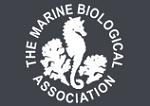APHOTOMARINE
An educational resource dedicated mainly to the photography
and diversity of marine life that can be found in coastal waters
and intertidal areas of Great Britain and Ireland by David Fenwick.

Acrochaetioid algae 17.07.20
- an epiphyte on Ceramium 1
Red seaweed
Acrochaetioid algae 17.07.20
- an epiphyte on Ceramium 2
Red seaweed
Acrochaetioid algae 17.07.20
- an epiphyte on Ceramium 3
Red seaweed
Acrochaetioid algae 17.07.20
- an epiphyte on Ceramium 4
Red seaweed
Acrochaetioid algae 17.07.20
- an epiphyte on Ceramium 5
Red seaweed
Acrochaetioid algae 17.07.20
- an epiphyte on Ceramium 6
The specimen above was found on side of pontoon at the marina, Newlyn Harbour, Newlyn, Cornwall, 17.07.20. In-situ this specimen had the appearance of a larger species of algae.
Red seaweed
Acrochaetioid algae 11.01.15
- an epiphyte on red algae 1
Red seaweed
Acrochaetioid algae 11.01.15
- an epiphyte on red algae 2
Red seaweed
Acrochaetioid algae 11.01.15
- an epiphyte on red algae 3
Red seaweed
Acrochaetioid algae 11.01.15
- with 0.1mm division rule 1
Red seaweed
Acrochaetioid algae 11.01.15
- cells at tip of frond 1
The acrochaetioid algae above was found growing epiphytically on another algae in a lowershore pool at Great Hogus, Marazion, Cornwall. 11.01.15.
Red seaweed
Audouinella thuretii ?
- fruiting bodies 1
Red seaweed
Audouinella thuretii ?
- fruiting bodies 2
Red seaweed
Audouinella thuretii ?
- with 0.1mm division rule 1
Red seaweed
Audouinella thuretii ?
- with 0.1mm division rule 2
The acrochaetioid algae above which might be Audouinella thuretii, it was found growing as an epiphyte on the red algae Cystoclonium purpureum, which was found as a drift weed at Lariggan Rocks, Penzance, Cornwall. 06.08.16.
Acrochaetioid algae cannot really be identified from images and apparently even with samples some cannot be reliably identified by experts. Images are placed here merely to illustrate examples of acrochaetioid algae.
APHOTOMARINE supports open source data recording and sharing for the benefit of wildlife, recorders, research, science and education. The project recommends the following websites and works with the following bodies and organisations.
The Marine Biological Association or MBA, based in Plymouth, is one of the world’s longest-running societies dedicated to promoting research into our oceans and the life they support. Since 1884 the MBA has been providing a unified, clear, independent voice on behalf of the marine biological community.It has a growing membership in over 40 countries.
The National Biodiversity Network or NBN is a charity that supports open source data sharing and recording supporting conservation, science and education. "Why do recorders need open source?". Simply because it supports the core values of wildlife recording and the free use of records and data over a very wide network that includes partners like the Natural History Museum.
The taxonomy used here is based on that of the following database, which is also used by the MBA, NHM and the NBN.
The World Register of Marine Species or WoRMS.
AlgaeBase is a database of information on algae that includes terrestrial, marine and freshwater organisms.

